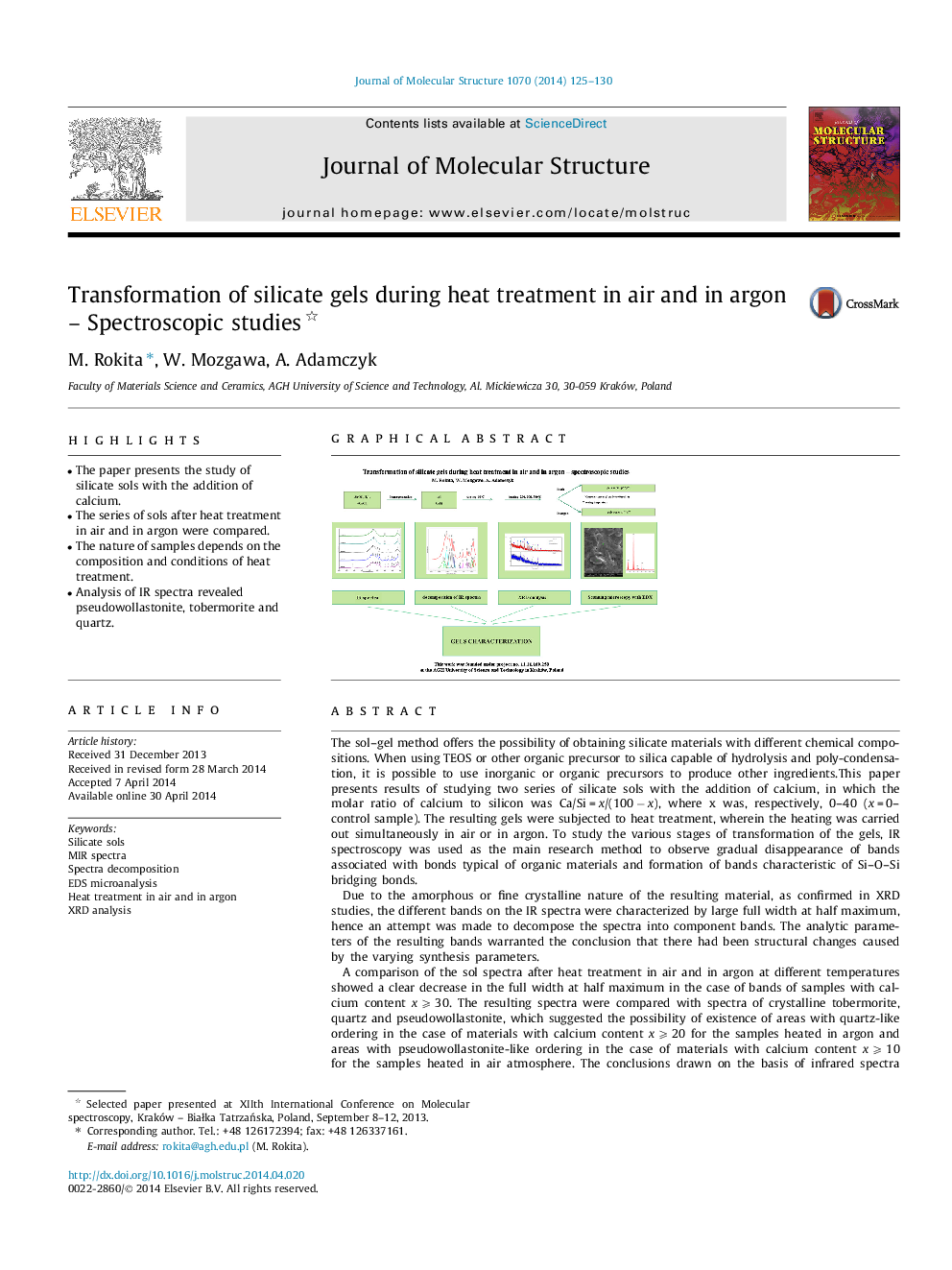| کد مقاله | کد نشریه | سال انتشار | مقاله انگلیسی | نسخه تمام متن |
|---|---|---|---|---|
| 1405105 | 1501747 | 2014 | 6 صفحه PDF | دانلود رایگان |
• The paper presents the study of silicate sols with the addition of calcium.
• The series of sols after heat treatment in air and in argon were compared.
• The nature of samples depends on the composition and conditions of heat treatment.
• Analysis of IR spectra revealed pseudowollastonite, tobermorite and quartz.
The sol–gel method offers the possibility of obtaining silicate materials with different chemical compositions. When using TEOS or other organic precursor to silica capable of hydrolysis and poly-condensation, it is possible to use inorganic or organic precursors to produce other ingredients.This paper presents results of studying two series of silicate sols with the addition of calcium, in which the molar ratio of calcium to silicon was Ca/Si = x/(100 − x), where x was, respectively, 0–40 (x = 0–control sample). The resulting gels were subjected to heat treatment, wherein the heating was carried out simultaneously in air or in argon. To study the various stages of transformation of the gels, IR spectroscopy was used as the main research method to observe gradual disappearance of bands associated with bonds typical of organic materials and formation of bands characteristic of Si–O–Si bridging bonds.Due to the amorphous or fine crystalline nature of the resulting material, as confirmed in XRD studies, the different bands on the IR spectra were characterized by large full width at half maximum, hence an attempt was made to decompose the spectra into component bands. The analytic parameters of the resulting bands warranted the conclusion that there had been structural changes caused by the varying synthesis parameters.A comparison of the sol spectra after heat treatment in air and in argon at different temperatures showed a clear decrease in the full width at half maximum in the case of bands of samples with calcium content x ⩾ 30. The resulting spectra were compared with spectra of crystalline tobermorite, quartz and pseudowollastonite, which suggested the possibility of existence of areas with quartz-like ordering in the case of materials with calcium content x ⩾ 20 for the samples heated in argon and areas with pseudowollastonite-like ordering in the case of materials with calcium content x ⩾ 10 for the samples heated in air atmosphere. The conclusions drawn on the basis of infrared spectra were confirmed by XRD – prolonged heating of gels at 700 °C allowed us to obtain fine quartz and pseudowollastonite.
Figure optionsDownload as PowerPoint slide
Journal: Journal of Molecular Structure - Volume 1070, 24 July 2014, Pages 125–130
